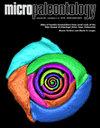强流体作用下第三系山前盆地晚渐新世礁杂岩的地层发育
IF 1.6
4区 地球科学
Q3 PALEONTOLOGY
引用次数: 1
摘要
由于白化事件导致的现代珊瑚礁的减少已被认为是人为驱动的气候变化的主要后果之一。然而,富营养化也被强调为珊瑚礁和生物多样性热点地区同样巨大的危险。近年来,这一现象已成为科学界关注的焦点。化石礁在研究富营养化条件下珊瑚礁环境的出现、发育和动植物多样性方面发挥着关键作用。它们作为研究珊瑚礁环境长期变化及其复原力的宝贵数据来源的重要性是无可争议的,特别是因为它们可能记录了珊瑚礁复合体的完整生命周期。本文介绍了意大利西北部萨沃纳省Dego镇附近的9个剖面,并对其岩石地层学和古生物学内容进行了讨论。由于数据量的广泛,可以重建受强烈流体影响的由岩心、侧礁和前礁组成的边缘礁的原始形态。本研究强调了珊瑚红藻在这种生物碳积累中作为主要成分和底物稳定剂的重要性。这些剖面记录了建筑群落对当地地下室的原始殖民事件,珊瑚礁的出现以及最后被流动沉积物窒息的过程。红藻组合的变化反映了一种加深的趋势,可能与河流输入的增加有关,这往往会使生态条件恶化,并成为初始珊瑚礁窒息的主要触发因素。本文章由计算机程序翻译,如有差异,请以英文原文为准。
Stratigraphic development of a Late Oligocene Reef Complex under strong fluviatile influence in the Tertiary Piedmont Basin (Liguria, NWItaly)
The modern-day decline of coral reefs due to bleaching events has been recognized as one of the major consequences of man-driven climate change. However, also eutrophication has been highlighted as an equally great danger for coral reefs and as such for biodiversity hotspots. In the latest years this phenomenon has moved to the forefront in the scientific community. Fossil reefs play a key role in studying the emergence, development and faunal/floral diversity of reef environments under eutrophic conditions. Their importance as valuable data sources for studying long-term changes of coral reef environments and their resilience cannot be disputed, especially since they may record the complete life cycle of a reef complex. In this study, nine sections nearby the town of Dego (Savona Province, NW Italy) are presented and discussed with regards to their lithostratigraphic and paleontological contents. Due to the extensive amount of data, the original morphology of a fringing reef, consisting of core, flank and fore reef, under strong fluviatile influence could be reconstructed. This study emphasizes the importance of the coralline red algae association in such biocarbonatic build-ups as major constituent and as substrate stabilizers. The sections record the original colonization event of the local basement by the builder community, the emergence of the coral reef and finally the suffocation by the fluviatile sediments. The variation of the red algae association reflects a deepening trend and is possibly correlated to enhanced fluvial input, which tends to deteriorate ecological conditions and functions as a major trigger for initial reef suffocation.
求助全文
通过发布文献求助,成功后即可免费获取论文全文。
去求助
来源期刊

Micropaleontology
地学-古生物学
CiteScore
3.20
自引率
6.70%
发文量
18
审稿时长
>12 weeks
期刊介绍:
The Journal of Micropalaeontology (JM) is an established international journal covering all aspects of microfossils and their application to both applied studies and basic research. In particular we welcome submissions relating to microfossils and their application to palaeoceanography, palaeoclimatology, palaeobiology, evolution, taxonomy, environmental change and molecular phylogeny. Owned by The Micropalaeontological Society, the scope of the journal is broad, demonstrating the application of microfossils to solving broad geoscience issues.
 求助内容:
求助内容: 应助结果提醒方式:
应助结果提醒方式:


